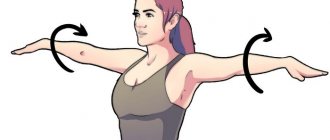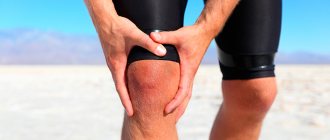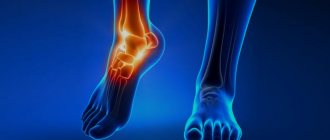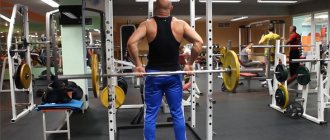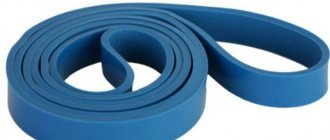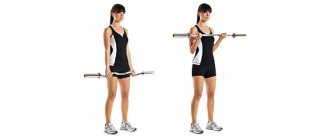Causes of shoulder bruises
The shoulder joint consists of two muscle groups, located between the shoulder and elbow joints of the arm. The first group of muscles consists of the coracoid, brachialis and biceps muscles, and the second - the olecranon, triceps and ulnar joint. Any of the muscles is responsible for the normal functioning of the forearm and allows it to perform the necessary movements. Beneath the muscle tissue is a long bone that attaches to the shoulder blade and forms the shoulder joint. In addition, in the shoulder area there is a nerve plexus, arteries and multiple vessels. When a shoulder injury occurs, any part of the joint can be damaged, so it is very important to determine the nature and severity of the injury.
A shoulder injury can occur for several reasons. It is mainly caused by a fall on the hand, an accidental blow or a sudden movement. At risk of receiving it are athletes, elderly people or those whose professional activities involve hard work. Often injuries are associated with the anatomical features of the structure of the shoulder region or chronic diseases of the musculoskeletal system.
Symptoms
Clinical signs of shoulder injury directly depend on the location, nature and extent of the injury. After an injury, it is sometimes difficult to determine its type, since a closed fracture can easily be confused with a dislocation or severe bruise. Therefore, after injury to the shoulder joint, you need to seek medical help and undergo an x-ray, which will determine the severity and nature of the injury.
As practice shows, regardless of the type of injury, after receiving it a person feels severe and acute pain, which intensifies with any movement of the hand. The inability to bend or straighten your arm is another sign of a shoulder injury.
Typical symptoms also include:
- Swelling and swelling in the shoulder area.
- Bruising, hematomas.
- Crunching in the joint.
- Decreased hand sensitivity.
With open injuries, there is a violation of the integrity of the skin, bleeding, and possibly painful shock with loss of consciousness. When a muscle tear is present, there is severe swelling and tissue retraction into the joint.
Important! After an injury, you need to be able to distinguish a bruise from a fracture or dislocation. So, with a fracture of the shoulder joint, there is a complete restriction of the mobility of the joint, a crunch in the bone. With a bruise, there are no such symptoms.
Degree of injury
Shoulder injuries from falls can be minor or extremely severe. It all depends on the nature and structures that were damaged during the external influence. In the practice of traumatologists, the following are most often encountered:
- shoulder fracture;
- dislocations;
- sprains;
- muscle fiber ruptures;
- bruises.
Often, along with damage to the joint itself, periarticular structures are damaged: muscles, tendons, bone tissue, blood vessels and arteries, and nerve endings. Their damage significantly worsens the clinical picture and increases the duration of treatment.
Shoulder joint injuries are mainly divided into 4 stages and classifications:
- Depending on the course - acute and chronic.
- By nature - mechanical, chemical, thermal, combined, barotrauma, sports.
- By severity - open and closed.
- By volume - single, multiple and combined.
It is quite difficult to recognize a shoulder injury, its severity and the nature of the damage without examination results, so doctors recommend going to the hospital at the first sign.
First aid
When you receive a shoulder joint injury, it is important to provide the victim with first aid, which determines the person’s general condition and the prognosis for recovery. In case of minor damage, a person will be able to relieve his condition on his own, take a painkiller, fix the limb in a position that will reduce the pain, and consult a doctor. However, in case of serious damage to the joint, first aid should be provided by the person who is nearby.
The algorithm of actions in case of a shoulder injury consists of the following:
- Examination of the hand and assessment of the nature of the injury.
- If a fracture or dislocation is suspected, immobilize the limb with a scarf or bandage. The sore arm should be bandaged to the body in a bent state.
- If there are external lesions on the skin, the wound should be treated with an antiseptic and a sterile bandage applied.
- You can put a cold compress on the bruise site, but for no more than 10 minutes.
- Give an anesthetic drug: Ketanov, Analgin, Tempalgin.
In case of fractures, dislocations or severe sprains, you should contact the traumatology department or call an ambulance as soon as possible.
Important! If you receive a shoulder injury, it is strictly forbidden to straighten or straighten the joint yourself. Such actions can cause irreparable harm to health and lead to disability in the future.
Dislocation
Dislocation is a displacement of a cartilaginous segment into an anatomically incorrect position in relation to the scapula. The reason may be a forced movement in an unnatural direction for the hand or a sharp collision with an object. It is impossible to restore the function of the joint without medical intervention, just as with a fracture.
Symptoms
When a dislocation occurs, the skin becomes blue or gray, the shoulder changes shape, and movements of the upper limb are difficult or impossible. When trying to bring the arm and shoulder into dynamics, you can hear a characteristic crunch. The pain is dull, but can radiate to the elbow or fingers.
https://youtu.be/JgpcWpp4D4Q
Treatment
For classic shoulder dislocation, treatment is divided into several stages:
- first aid;
- restoration of the anatomically correct location of the joint (reduction);
- fixation of the injured limb (using a bandage or bandage);
- rehabilitation procedures.
Temporary immobilization of the limb and rehabilitation exercises are very important, as they allow the joint to “grow together” with the connective tissue and lock in the correct position. Patients who ignore post-treatment measures often become victims of relapse (dislocation in this case can occur even with light physical activity and support on the sore arm).
https://youtu.be/S7noAM3YwEA
Diagnostics
After receiving a shoulder injury, you need to consult a traumatologist or orthopedic surgeon. After examination, the doctor assesses the degree of dysfunction of the shoulder and urgently prescribes an x-ray, which will allow one to assess the location and nature of the shoulder injury. If the picture after the x-ray is not clear or if extensive damage to the periarticular tissues is suspected, an MRI or CT scan is prescribed, which allows obtaining complete information about the diseased limb. After receiving the diagnostic results, the doctor prescribes the necessary treatment.
Treatment of a shoulder injury
Treatment for a shoulder injury depends on the type and extent of the injury. The function of the joint can be restored using conservative methods or surgical intervention. Basically, treatment consists of 4 stages:
- Pain relief – taking analgesics in the form of tablets or injections that will help relieve pain.
- Reduction in case of dislocation or fracture is carried out only by a traumatologist or orthopedist.
- Immobilization – immobilization of a limb with a plaster cast or elastic bandage.
- Rehabilitation is a set of measures that allows a joint to recover faster after an injury.
If there is no violation of the integrity of the bone, and the cause of pain in the shoulder is a bruise or sprain, the doctor prescribes conservative therapy. It includes the use of topical medications, and immobilization of the limb for several days is also indicated.
Immobilization
An important point in providing first aid and treating a shoulder injury is immobilization, which helps prevent displacement of bone fragments during a fracture or damage to soft tissues. Indications for its implementation are fractures, dislocations, damage to muscles, blood vessels or nerves. There are two main types of immobilization of the shoulder joint after injury:
- Transport – carried out immediately after injury during first aid and persists until admission to the hospital.
- Therapeutic – applied by a doctor in a medical institution for a long period of time.
Limb immobilization is carried out in several ways:
- scarf;
- bandaging;
- Delbe rings:
- Kramer ladder splint;
- Deso bandage.
When providing first aid, you can use any available materials as a splint - a board, a book, a plank, and you can fix them to the injured limb using a belt, lace or any fabric.
After admission to the hospital, the patient undergoes a series of diagnostic and therapeutic measures and only then immobilization is carried out. For fractures or dislocations, a plaster cast is applied. For good fixation of the limb, a Cramer ladder splint is often used.
The algorithm for its application is as follows:
- The distance from the finger to the elbow joint is measured on the splint.
- Bend at an angle of 90 degrees.
- The splint needs to be shaped so that it does not squeeze the hand.
- Shape the gutter.
- Starting from the middle of the shoulder, the tire should lean forward, wrap around the shoulder in front and above, and point downward.
- A ball of cotton wool is placed in the armpit.
- The splint should be applied to the whole hand.
- Secure it with wide bandages.
- The limb is suspended on a bandage - a scarf.
This immobilization method is most often used for shoulder fractures. If the shoulder injury is accompanied by a bruise or sprain, it is not necessary to use braces, but you still need to limit the movement of the joint for several days. Here you can get by with an elastic bandage.
Use of drugs
Drug treatment for a shoulder injury is carried out to reduce pain, relieve inflammation, improve blood circulation or remove a bruise. It consists of using drugs for internal and external use. Medicines are prescribed from the first day of injury until the period when characteristic symptoms decrease or disappear. Therapy most often includes the following medications:
- Analgesics – eliminate pain, relieve inflammation: Ketanov, Ketalorak, Nimesil. For severe and acute pain, the doctor may prescribe narcotic analgesics: Tramadol, Morphine, Promedol. Available in different forms: tablets, injections, powders for oral administration. The dose of any painkiller is prescribed by the doctor individually for each patient.
- Ointments and gels with analgesic and anti-inflammatory effects: Nise gel, Fastum gel, Finalgon, Apizartron and others. They are applied to the joint after removing the plaster cast or used for sprains and bruises.
- Calcium preparations - Calcium gluconate, Calcemin, Calcium D3 nycomed and others, which help strengthen bone tissue and speed up healing.
If a shoulder injury causes a bruise, the doctor may prescribe ointments to resolve hematomas and improve blood circulation: Indovazin, Troxevasin, Sinyak OF, Lyoton. For severe fractures and dislocations, drugs from the group of chondroprotectors are prescribed, which protect cartilage tissue from destruction and promote the production of synovial fluid for normal joint function.
Is it possible to do push-ups with spinal osteochondrosis?
The human spine performs a number of important functions. However, the modern rhythm of life negatively affects its condition and various diseases of the cartilage discs arise. They wear out, become fragile, sag, causing pain and discomfort.
One of the common diseases of the spine is osteochondrosis. It is a series of dystrophic disorders that occur in articular cartilage. As a rule, it affects the intervertebral discs and is expressed in thinning of the disc thickness.
In turn, this leads to nerve pinching and pain. Often the disease affects those parts of the spine that bear the maximum load.
Alas, cartilage tissue does not regenerate, so the only solution to the problem is to strengthen the back muscles. This will relieve stress from the spine and eliminate pain. Therefore, for osteochondrosis, push-ups, pull-ups and other physical exercises that do not load the spine are useful.
Many people ask the question, is it possible to do push-ups with osteochondrosis? It’s not just possible, but necessary. But push-ups alone will not be enough. It is advisable to train in a complex manner to get maximum results.
In this material we will analyze how push-ups help against osteochondrosis of various parts of the spine. What are the nuances and features?
Rehabilitation period
An important stage in the treatment of a shoulder injury is rehabilitation, which is carried out from the moment the plaster cast is removed or when symptoms are eliminated during the recovery stage. The quality of rehabilitation therapy determines how quickly the joint will regain its functionality.
The rehabilitation period can last from several days to a couple of months. Comprises:
- physiotherapy;
- therapeutic exercises;
- massage;
- taking calcium supplements, vitamin complexes or chondroprotectors;
- diet therapy.
Rehabilitation is very important because it helps restore the damaged joint to its functionality, reduce the risk of possible complications, and speed up the recovery period. All recovery measures are prescribed by a rehabilitation doctor. The patient needs to follow all medical instructions, only then can positive dynamics be expected.
Physiotherapy for shoulder injury
Physiotherapeutic treatment can be prescribed by a doctor immediately after injury or 2 to 4 weeks later. Help reduce inflammation, pain, improve blood circulation. Benefits for a shoulder injury include:
- UHF therapy;
- paraffin applications;
- electrophoresis with potassium iodide and novocaine;
- magnetotherapy.
For one course, the doctor recommends 5 to 10 physiotherapy sessions, but if there is a need, more courses are prescribed.
Massage will be beneficial, allowing you to strengthen ligaments and muscles, improve blood circulation, and eliminate stagnant processes. It is recommended to carry out a massage after undergoing one of the methods of physiotherapy. Must be performed by a professional massage therapist. After several procedures, a person can learn the technique and perform self-massage on his own at home.
Physiotherapy
An integral part of recovery for injuries to the shoulder joint is physical therapy (PT), which returns the shoulder to its previous functionality. You need to start exercises for the shoulder joint after an injury under the supervision of a doctor, starting with minimal movements, gradually increasing the load.
The training program includes the following movements:
- Movement of the fingers, flexion, extension.
- Turning the hand to the right, left, raising and lowering the affected arm.
- Squats with a chair behind your back, both hands should be on the back of the chair.
- The injured arm should be extended forward and held until you feel tired.
- Pass the ball from one hand to the other around its axis.
- Rotation of the shoulder joint.
For a shoulder injury, you need to perform each exercise no less than 5 to 10 times. During the process, a person should not feel pain or discomfort, but if discomfort still appears, training should be stopped. After complete recovery of the shoulder, you can hang from the bar, go to the pool, jump rope and go to the gym.
The intensity of training for injuries to the shoulder joint depends on the nature of the injury and its complexity, therefore, when you can start the training process, your doctor will tell you.
how people kill their backs at the gym
In this regard, I have a statement:
«
Remember! There are NO muscles doing the work in this place!
This place cannot be “pumped up” or, conversely, stretched. In this place there are only stabilizer muscles that help maintain balance. And they should NOT be doing heavy strength work lifting your body weight. And the lower back hurts precisely because some of the stabilizers do this. That is, they perform work that is not typical for them. And if you try to force them to work even harder and become even stronger, they will take revenge on you.

